A Hole in the Ground
While Noel was on the roof, I was in the garden. Right before we left for our vacation, we had a catastrophic fishtank failure that involved 55 gallons of water coursing through our front hall. The fish were relocated to the rigid pond liner, where they were intensely happy. Given that the fish prefer being outside in the pond to inside, and I have to repair the fish tank anyway, I decided to set the liner in the ground and let it be a pond.
To that end, I filled up the dog pool with water and moved the fish there so I could empty the pond liner. Then I was ready to get to work on my hole.
The instructions for installing a rigid pond liner are delightfully vague. "Dig a hole to fit the liner." Indeed? Well, it wasn't that bad, but there's an entire afternoon of work in that one sentence. I marked around the edges of the liner (which was a lot of eyeballing of the edge, because of course the liner is not symmetrical, so I had to locate the edge from above, rather than just turn the thing over and mark the edge easily). I cut the line with my shovel and moved the liner aside to get down to the fun task of removing the sod. Quite a lot of my time has been spent placing, moving, and removing sod.
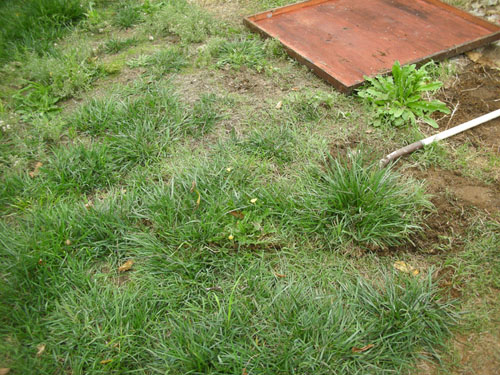
Removing sod after a heavy rain is not too bad. And the chickens helped by running in and raking the ground out for me. The problem with this sort of work is that you end up spending most of your time getting the animals out of the way rather than actually working.
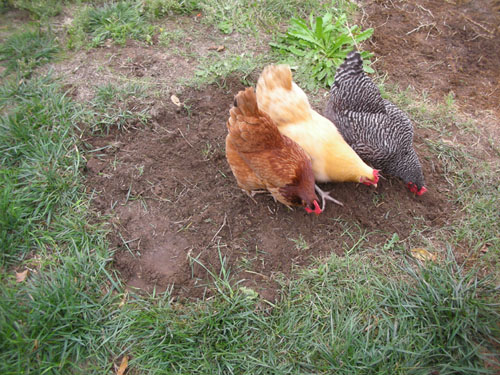
The process of fitting the liner to the hole was more fiddly than ideal, but not as bad as I expected. Once I got down below the insect and worm level, the chickens stopped interfering with me as much, and I was able to make decent progress. I would set the liner in the hole and push down on it, and when I lifted it out, there would be marks where I needed to do more digging. It went fairly smoothly, all things considered.
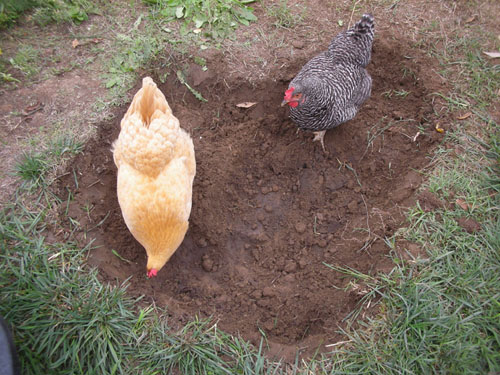
And soon I was able to get more fiddly, setting the liner to level and wedging it in place with some of the pile of sand I dug out of the hole.
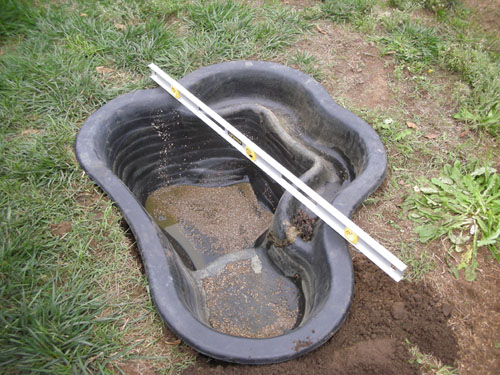
When it was pretty much level, I filled in around the sides with sand. This is when I realized that having dug such a precise hole was a drawback: I had to slide the sand in around the edges with my fingers. At any rate, I got it filled in and piled some more sand around to run into the cracks when it rains (actually, by the time I took this photo it had started raining, so there you are).
And here we are: the pond liner, ready to fill up as soon as the sump runs again (I don't put the fish in city water because of chloramines).
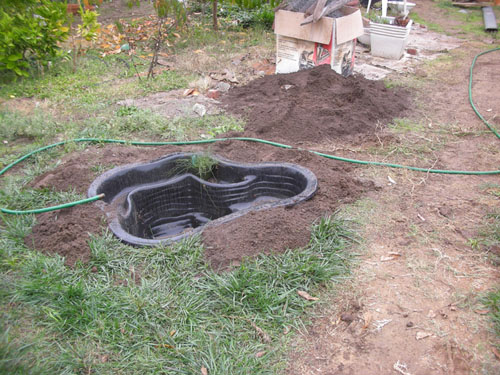
And with a dog lounging in the dirt, as she likes to do.
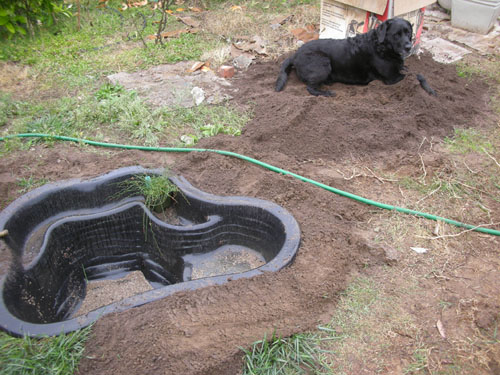
It didn't take long for the sump to run and partially fill the liner. A couple more cycles and we're all set.
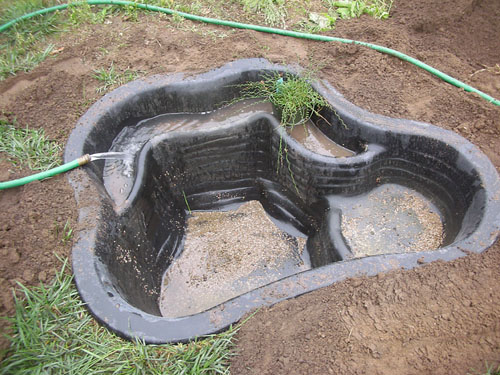
That's a curly rush in there, and I want to add a couple more water plants. The plants help clean the water, and they provide shelter for the fish. But also they seem to keep the dogs from immediately jumping in the water.
Technorati Tags: chickens, dogs, fish, pond, water
posted by ayse on 11/09/08